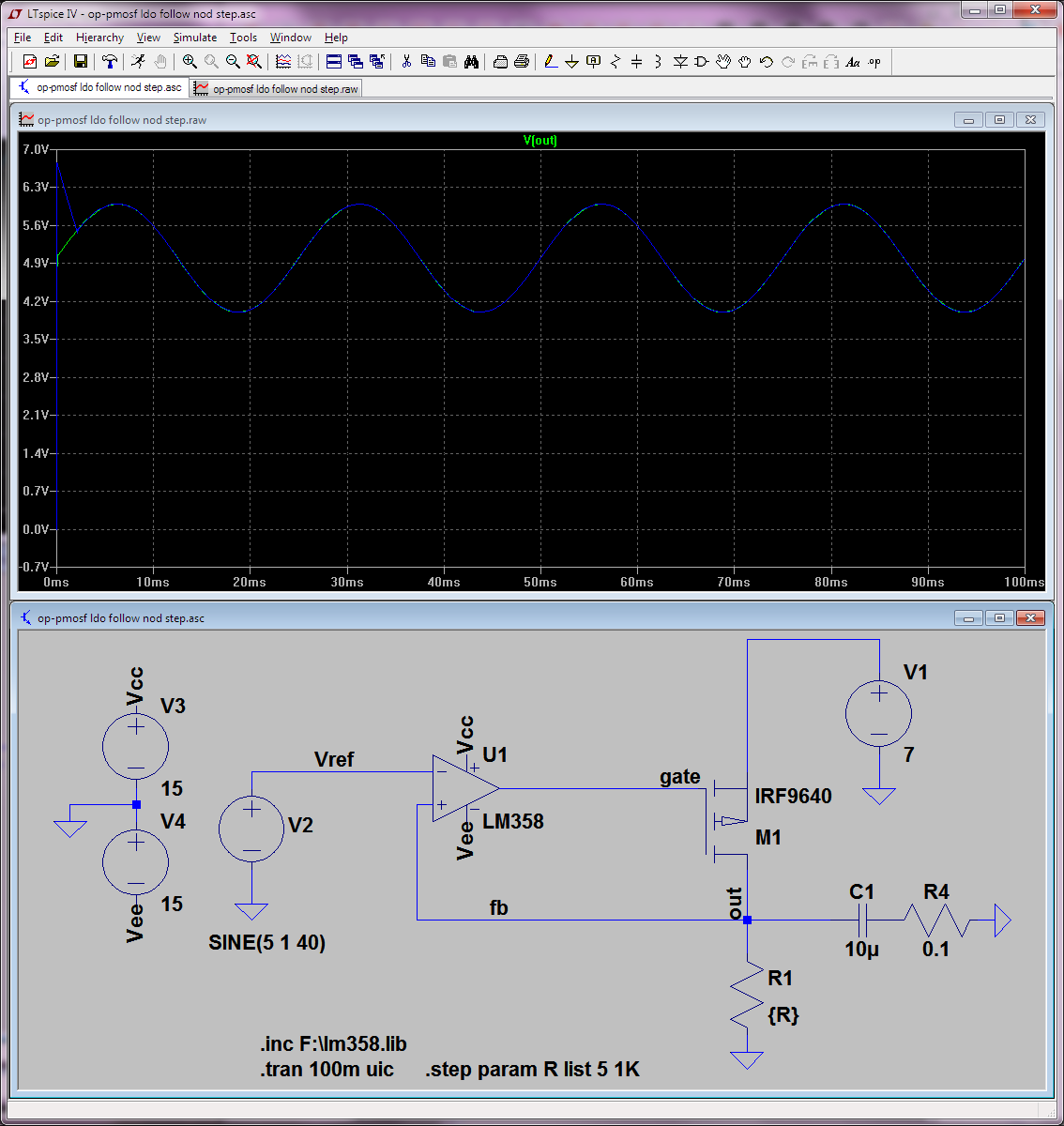Note: the following paragraph is somewhat incorrect, in the sense that your idea could (and does) work with some tweaks and in a lot of products, PMOS LDOs in particular; see the subsequent material. I'm leaving this paragraph here though because LvW replied to it.
Well, capacitive load is a difficult problem to deal with even in a correctly set-up circuit, but in your circuit [as drawn] you are providing positive feedback to the opamp! This will oscillate like crazy even in simulation... with the same predicted 5Vpp. Yeah the oscillation shape is a bit different in simulation, but what do you expect... no parasitics and LM358 has a rather basic SPICE model.
@LvW: I need to think a bit more about what exactly happens but see updated graph with Vgate plotted as well. Clearly it never reaches 5V so the opamp is never seeing actual negative feedback as this design purportedly does. So the opamp works like a comparator basically. There's also some phase shift between these two signals, but I'm not convinced that's the cause of the oscillation, rather I think it's "by design". I've tried adding some big (1K, even 10K) resistor on the gate, and it still oscillates the same.
Basically what you're trying to do is design a PMOS LDO! But you're doing it fairly wrong. You need to compensate it with a bypass cap of the right-ish size and ESR! Also, a PMOS LDO would take the feedback through a voltage divider. Here's my amateurish LDO design:
As usual with PMOS LDOs, the output cap ESR is critical and needs to be in a certain band. Look what happens if I lower it, for instance; starts to oscillate:
If ESR is too high, you're again in trouble; well for this (fairly low) load it does have to get pretty high before it oscillates on the other side of the safe band:
Actually, the only critical element in there is that compensation cap. A 10uF one with 0.1ohm ESR appears to work for a fairly large load range from 1K down to 5 ohms (which would give you the 1A sooutput you wanted):
You'd get some bandwidth limitation from cap this cap of course.








